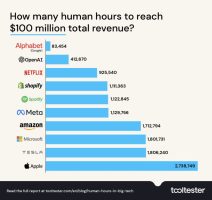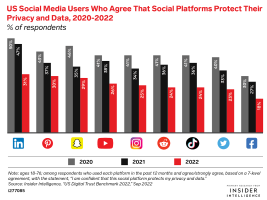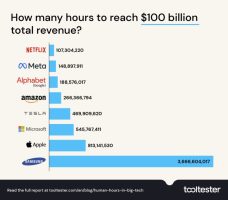By Olawale Bamidele
In today’s digital world, companies are constantly balancing two competing demands: user privacy and personalized experiences. While users want relevant content, tailored recommendations, and seamless interactions, they also demand control over their personal data. The conflict between privacy and personalization has become a defining issue in modern technology.
A 2022 Pew Research study revealed that 79% of users are concerned about how companies use their data, yet 63% appreciate personalized experiences. The challenge for tech companies is finding a middle ground—delivering hyper-personalized experiences without breaching trust or violating data privacy regulations.
The Rise of Personalization in Tech
Tech companies leverage data-driven personalization to enhance user engagement and optimize customer experiences. Algorithms analyze browsing history, purchase behavior, and demographic data to tailor ads, recommend products, and provide custom content. According to McKinsey, businesses that use personalization effectively can drive substantial revenue growth.
Why Personalization Matters
- Better User Experience: 74% of consumers expect websites and apps to offer personalized experiences (Accenture, 2022).
- Increased Engagement: Personalized emails generate 6x higher transaction rates (Experian, 2022).
- Higher Conversions: A McKinsey report from 2022 found that personalization can boost revenue by up to 15% and improve marketing ROI by 30%.


Source: Google
Personalization in Action
- Netflix & Spotify: AI-driven recommendations based on watch/listening habits.
- Amazon & eCommerce: Predictive analytics suggest products based on browsing behavior.
- Google & Meta: Data-driven ad targeting that personalizes user experiences.
Privacy Concerns and Rising Regulations
With personalization comes increased data collection, leading to concerns about user privacy, surveillance, and data misuse. The past decade has seen growing scrutiny of how tech giants handle user data, leading to new laws and regulations. As outlined by Forbes, consumers are becoming increasingly aware of the risks associated with data sharing.
Major Privacy Concerns
- Data Collection Without Consent: Many platforms track user activity without explicit permission.
- Third-Party Data Sharing: Users often have little control over who accesses their data.
- Algorithmic Bias & Discrimination: AI-based personalization can reinforce biases and limit user autonomy.

Key Privacy Regulations (2022)
- General Data Protection Regulation (GDPR) – Europe: Requires explicit user consent for data collection.
- California Consumer Privacy Act (CCPA) – U.S.: Grants users the right to know what data is collected and opt-out of its sale.
- Apple’s App Tracking Transparency (ATT): Enforces stricter consent policies, reducing data access for advertisers.
A 2022 Cisco Privacy Benchmark Study found that 81% of organizations worldwide have updated their data protection policies due to privacy regulations, leading to increased transparency and user trust.
The Privacy vs. Personalization Dilemma
Tech companies are caught between providing tailored experiences and respecting user privacy. Stricter privacy laws and growing consumer awareness have led to major shifts in how businesses handle data. This dilemma is explored in-depth by experts at Harvard Business Review, who discuss the need for balance.

How Companies Are Adapting
1. First-Party Data Collection
Companies are moving away from third-party cookies to first-party data strategies, relying on direct user interactions rather than external tracking. This shift was highlighted by Google’s announcement to phase out third-party cookies by 2023, forcing advertisers to adopt new approaches.
- Google: Announced the phase-out of third-party cookies by 2023, pushing advertisers toward a first-party data approach.
- Adobe and Salesforce: Invested in Customer Data Platforms (CDPs) to centralize user data with user consent.
2. Privacy-Focused AI and Federated Learning
Privacy-preserving technologies are emerging to balance personalization with security.
- Federated Learning: Google’s AI model processes user data locally on devices instead of centralized servers, reducing data exposure.
- Differential Privacy: Adds statistical noise to datasets, protecting individual identities while maintaining usability. This technique is used by Apple to ensure user data security.
3. User-Controlled Personalization
Giving users more control over their data is becoming a priority. This trend is exemplified by companies such as Meta and Apple.
- Meta’s Privacy Dashboard (2022): Allows users to manage personalized ad preferences.
- Apple’s iOS 15 Mail Privacy Protection: Prevents email tracking, limiting data collection by marketers.
The Future: Can Privacy and Personalization Coexist?
Striking a balance between privacy and personalization will require innovation, ethical data practices, and a shift in business models. TechCrunch explores potential solutions, emphasizing the need for companies to prioritize transparency and trust.
What to Expect Moving Forward
- Zero-Party Data Strategies: Encouraging users to willingly share data through loyalty programs and value exchanges.
- Stronger Privacy Laws: More countries adopting GDPR-like regulations.
- AI Advancements in Privacy Protection: Improved encryption and on-device processing reducing data exposure.
- Ethical AI and Bias Mitigation: Addressing discrimination in algorithm-driven personalization.
Conclusion
The battle between privacy and personalization is far from over. While users expect convenience and relevance, they also demand security and transparency. Tech companies must navigate this challenge by adopting privacy-first personalization strategies, ensuring compliance with evolving regulations, and fostering trust through responsible data practices.
Those who successfully integrate privacy and personalization will shape the future of digital experiences while avoiding legal pitfalls and reputational risks. As we look ahead, it is clear that the relationship between privacy and personalization will continue to evolve, influenced by both technological innovation and societal expectations. The future of tech depends on the industry’s ability to respect user privacy while offering the personalized experiences that consumers demand.






